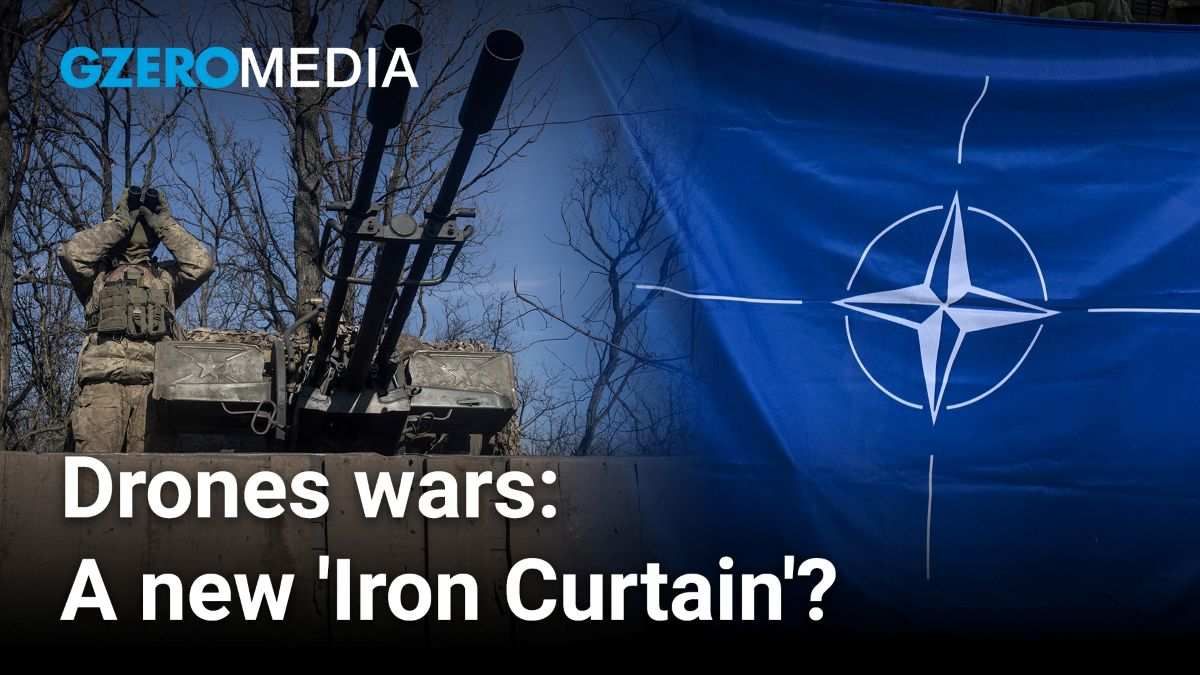First there was the Russian drone in Poland. Then Romania. Then Russian jets flew into Estonian airspace, while some unmanned aerial vehicles (UAVs) shut down Denmark’s airports.
In recent weeks, Russian aircraft have been illegally violating European airspace with greater frequency and boldness.
What are the Europeans going to do about it? One possible answer emerged last week, when the European Commission announced it would explore building a so-called “drone wall,” an air defense system involving radars, sensors, and missiles that aims to detect and destroy drones that pass through Europe’s eastern borders.
One former NATO leader suggested the wall could be operational within a year.
The idea for a drone wall, though, will test Europe’s – and, more broadly, NATO’s – ability to agree on the system’s costs, deployment, and even its purpose. The subject will be one of the hottest items on the agenda as European Union leaders meet in Copenhagen this week to discuss the continent’s collective defense.
Eurasia Group’s Europe Director Jan Techau said there are a few different paths that Europe could take. It could build a drone wall along NATO’s eastern flank that would involve shooting down UAVs, create a system that merely jams Russian drones to make them inoperable, or simply boost drone defenses as part of a broader effort to update Europe’s air defenses across the continent.
“The big, decisive question is,” said Techau, “when the EC’s defense chief Andrius Kubilius brings the defense ministers together in Brussels for an EU defense ministers meeting, how much support will [the drone wall] get?”
Some, such as German Defense Minister Boris Pistorius, are already pouring cold water on the idea, arguing this week that it would take at least three or four years to build such a defense mechanism.
“Drone defense, of course,” he said, “but not by a drone wall.”
There are also questions over the rules of engagement for any new anti-drone defenses. If a Russian UAV enters NATO airspace, it’s “fair game” for a NATO country to shoot it down, per Techau – Poland did just that last month. But some say the system should aim beyond that.
At Eurasia Group’s Europe Summit last month, former US Ambassador to NATO Ivo Daalder suggested shooting down Russian drones before they enter NATO territory, creating dicey dilemmas.
“What if Europeans shot down Russian drones in Ukrainian airspace? Would that make them a party in the war?” Techau questioned. “So far, most Europeans fear that the answer is yes. So they won’t do it. Which is why Daalder’s suggestion sounds unrealistic to me.”
Still, the spate of recent drone incursions in Eastern Europe – as well as the increasing role of UAVs in modern warfare – has created urgency around the need for more effective defenses against unmanned aircraft.
“Something will happen. There will be more drone defense. There’s a greater sense of urgency,” said Techau. “Now the big question is whether it can be a pan-European effort, or whether it will be individual national efforts.”
